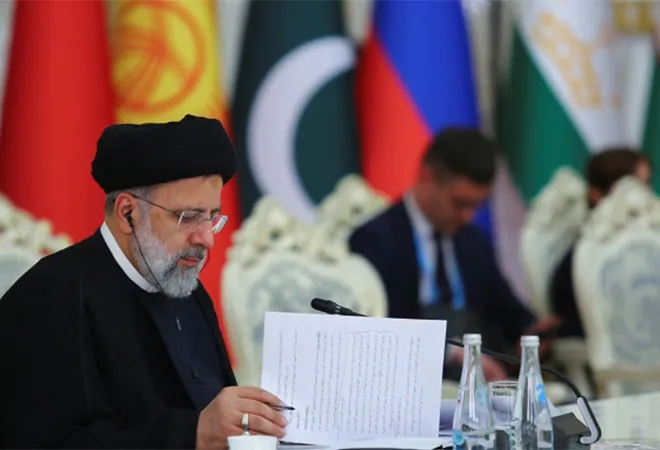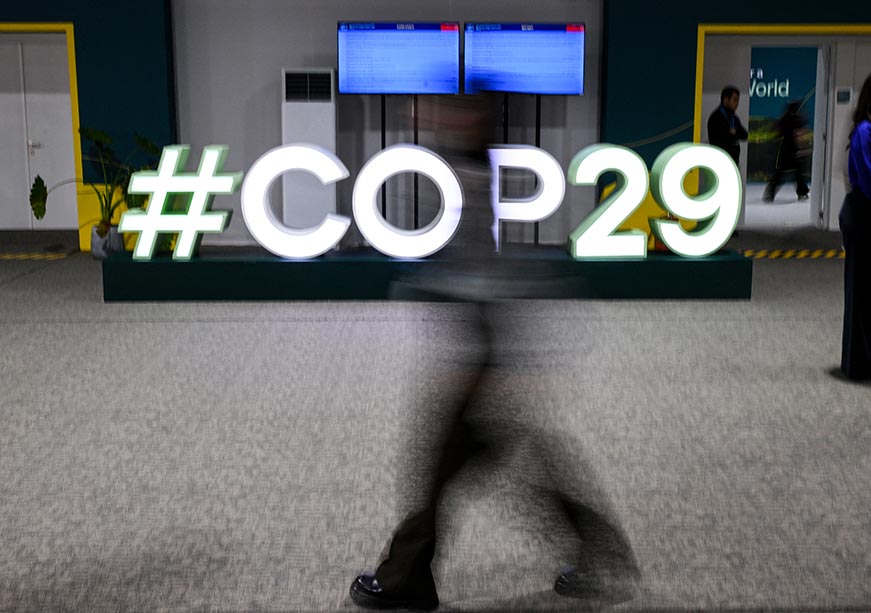UAE-Romania ties reflect how gateway states can counter global economic fragmentation through strategic interregional trade and investment cooperation.
The world economy with its trade and investment components is at a precarious moment, it is facing a downturn as increasing “trade tensions, along with policy uncertainty, have significantly weakened the global economic outlook for 2025” and “persistent weakness in global investment growth drags down long-term economic prospects.” – analyses the United Nations Department of Economic and Social Affairs (UNDESA) in its World Economic Situation and Prospects 2025 Mid-year update.
The geoeconomic potential of regional connectivity hubs
Considering the UNDESA’s projections and the seemingly deteriorating landscape of trade and investment relations amid rising geopolitical tensions, the perspective of enhanced economic cooperation between countries, which are regional connectivity hubs, is increasingly valued. Cooperation can counter and prevent fragmentation into isolated or rival economic blocs.
The risk of such fragmentation is a core component and prevailing narrative of global geopolitical and geoeconomic foresight scenarios. For instance, the Organisation for Economic Co-operation and Development (OECD) mentions the potential of a Multitrack World “where humanity has formed into several separate and largely parallel clusters, each operating within its own data infrastructure and digital ecosystem” by 2035, and the United States’ National Intelligence Council’s Global Trends report portrays a world “fragmented into several economic and security blocs of varying size and strength” by 2040. The United Arab Emirates’ (UAE) Future Outlook equally describes the potential disintegration of the global free trade system as a megatrend that may transform economic cooperation by 2050. The same Outlook highlights that re-export hubs, such as the UAE, “might be relatively more vulnerable to rising protectionism if global trade slows down […] Even more so, it will be important for policymakers in re-export hubs to maintain pro-trade and pro-investment policies.” Since the first edition of the Future Outlook in 2017, the global economic landscape has decayed as growing geopolitical adversity reshapes existing trade and investment patterns and partnerships.
The countries located at the crossroads of interregional and intercontinental trade flows and integrated into regional connectivity ecosystems have a significant potential to be active players—not bystanders—of the evolving international trade landscape. However, for states to capitalise on their geostrategic location, political will must meet visionary thinking and the capacity for effective resource mobilisation. If the above criteria are met, building and reinforcing economic partnerships between countries that are regional trade and logistics hubs, but not directly linked to one another by interregional connectivity projects, can help bridge strategic trade gateway states.
This paper examines the evolution and prospects of bilateral economic relations between the UAE and Romania to assess the potential for enhanced economic cooperation between gateway states in different regions
Recognising shared potential – when gateway states invest in their peers
The UAE and Romania are cognizant of their geostrategic location and are willing to leverage it. The UAE describes itself as a country that “has been naturally positioned as a hub for international trade between Asia and Europe on an east-west axis and the CIS [Commonwealth of Independent States] and Africa on north– south axis”, at “the Crossroads of Global Commerce in [the] Middle East”. Conscious of the benefits from its strategic location, leveraging the UAE’s central role in global trade is a key pillar of the state’s vision. In its forward-looking visionary document, We the UAE 2031, the country views itself in the future as a “trusted bridge for international trade and partnerships” and “an essential player in economic cooperation”.
Similarly to the UAE, Romania—one of the European Union’s (EU) easternmost member states, bordering the Black Sea—portrays itself as a “gateway of business from the east to the west”, at “the crossroads of three great markets: the European Union, the CIS states and the Middle East.” The country is part of various trans-European corridors under deployment, which anchor it to the EU’s transport ecosystem. The Orient / East – Med corridor (6,480 km) and the Rhine–Danube corridor (5,910 km) connect Romania to Central and Eastern Europe, allowing the country’s main port, Constanta—the largest port of the Black Sea—to get deeply integrated in the EU’s trade routes. Therefore, the country heavily invests, with the support of EU funds, in the development of its highways and welcomes foreign investors to build or modernise its land-based and maritime infrastructure, as outlined by Titus Tintean, Economic Counsellor at the General Consulate of Romania in Dubai.[1]
Being aware of its “rich history in business and trade” and its strategic geographic location that the county itself describes as a competitive advantage, Romania aims to leverage its position as a bridge between regions to attract foreign investments. According to Titus Tintean, one of the fundamental goals of the country’s economic promotion strategy is to ‘become through Constanta’s port the Southern Gate of the EU to the Middle East and the Northern Gate of the Middle East to the EU.’ Tintean also highlighted that Romania recognises the UAE’s privileged position as a regional connectivity hub to a continent with growing economic and demographic prospects.
The economic potential of the two strategically located countries was mutually recognised early on, only a few years after the foundation of the UAE: in 1974, Romania opened an Office for Economic Promotion and Cooperation in Dubai. In 1993, Romania was among the first countries from Central and Eastern Europe to sign a Bilateral Investment Treaty with the UAE, with the desire to “create favourable conditions for greater economic cooperation […] particularly for investments by investors of one Contracting Party in the territory of the other Contracting Party.” Bilateral trade between the two countries roughly tripled over the past two decades, with a total trade volume of US$271.5 million in 2010 and US$824.3 million in 2023, while non-oil exports from the UAE nearly doubled during the same period, rising from US$38.7 million to US$64.0 million. As stated by Titus Tintean, by the 2020s, the UAE established itself as one of Romania’s primary trade partners in the Gulf and the wider region.
Trade is not the only flourishing aspect of the UAE-Romania economic cooperation. The two states have repeatedly identified investment promotion as a priority sector, and it is now yielding results. Mutual investments between the two countries are increasing, with Emirati investments exceeding Romanian ones. Based on the amount of the Foreign Direct Investment stock in Romania in 2023, the UAE ranked as the country’s major investor from the Gulf. The leadership of both states has identified technology, transportation, logistics, and food security as key priority sectors for investment. Considering the countries’ geostrategic location for interregional trade and connectivity, investing in transportation and logistics is particularly important.
Investing in connectivity – breaking the economic fragmentation paradigm
A notable example of recognising the economic potential of maritime transport infrastructure at geostrategic junction points is the investments made by UAE companies in Romania’s Constanta port. In 2022, Dubai’s Ports, Customs and Free Zone Corporation (PCFC) and DP World signed an agreement with the Romanian government to develop a new terminal to increase cargo vessel flow. The infrastructure development aims to facilitate and accelerate cargo transit.
Looking beyond the shores, the prospects of Romania’s connectivity potential from the western coast of the Black Sea to the heart of the EU also attracted Emirati capital investments in ‘dry (land-based) ports’, highlighted the Economic Counsellor at the General Consulate of Romania in Dubai. For instance, DP World built an intermodal logistics hub at Aiud, in the “industrial heartland of Romania”. The project seeks to link DP World’s “existing sea, rail, barge and truck services across Romania” to “enhance the movement of goods between mainland Europe through to the Black, North and Adriatic Seas.”
Investments of this strategic nature, with the explicit aim of connecting transport roots and boosting trade on a cross-regional scale, serve as antidotes to geoeconomic fragmentation. Extending beyond the local impact of bilateral cooperation, Romania, being a member of the EU and the UAE of the GCC, the economic partnership contributes to the market dynamics and prosperity of the two regions.
The European Commission recognises the growing strategic importance of investments in developing port infrastructure in maritime hubs such as Constanta, which handles higher volumes as geopolitical conflicts reshape global trade patterns. This approach was underpinned in January 2024 by the green light given by the European Commission for “a €126 million Romanian scheme to support investments in ports facing increased trade flows.’ The aid, in question, is provided as grants “up to €10 million to logistics companies active in Romanian maritime and inland ports.”
Conclusion
Recognising the potential of connectivity hubs at the intersection of regions and having the political will and capacity to harness this potential is one of the cornerstones of the UAE-Romania bilateral economic cooperation. The two countries leverage and capitalise on their gateway position from the main maritime trade routes to the heartland of their respective continents. Romania and the UAE value trade and investment as a means to foster growth and prosperity, and they proactively promote this approach on the global stage.
Such cooperation does not merely serve the economic interest of the countries involved but also has a greater spillover effect on regional and global trade. Due to its nature, economic cooperation between geographically distant connectivity hubs opposes the logic of fragmentation, fosters collaboration over confrontation and prevents the emergence of inward-looking, protectionist blocks.
Eszter Karacsony is an Associate Fellow (Geopolitics) and Programme Lead, Observer Research Foundation- Middle East.
[1] Titus Tintean, Economic Counsellor of the General Consulate of Romania in Dubai, was interviewed by the author of this article on 4 June 2025.












